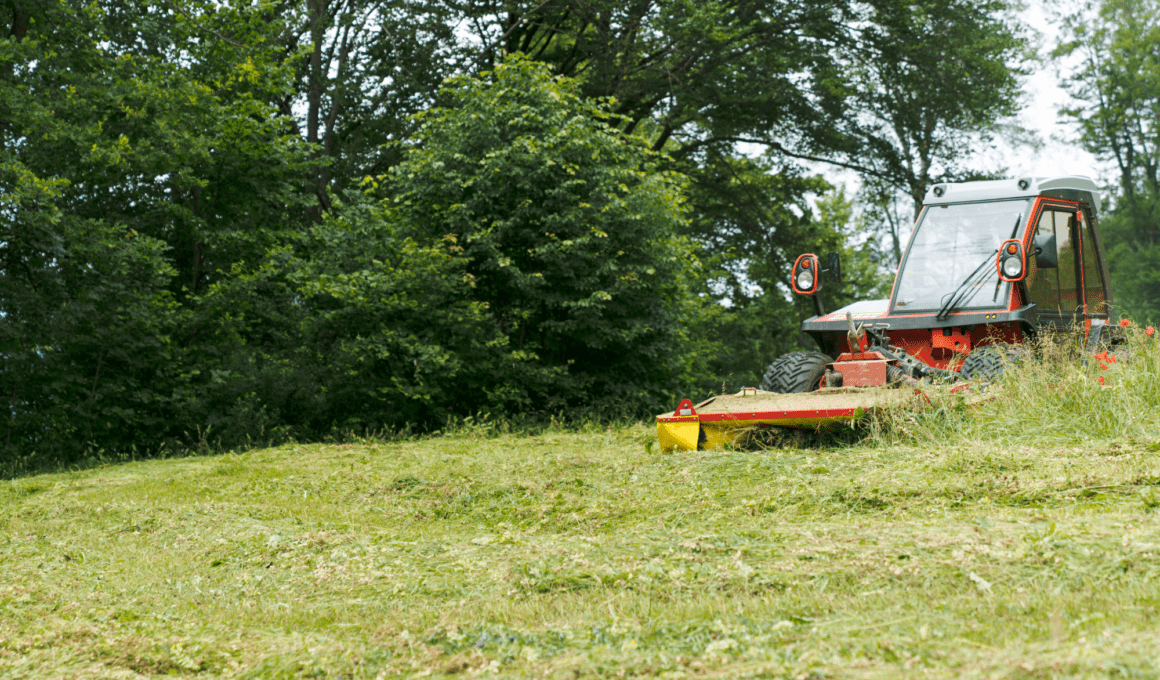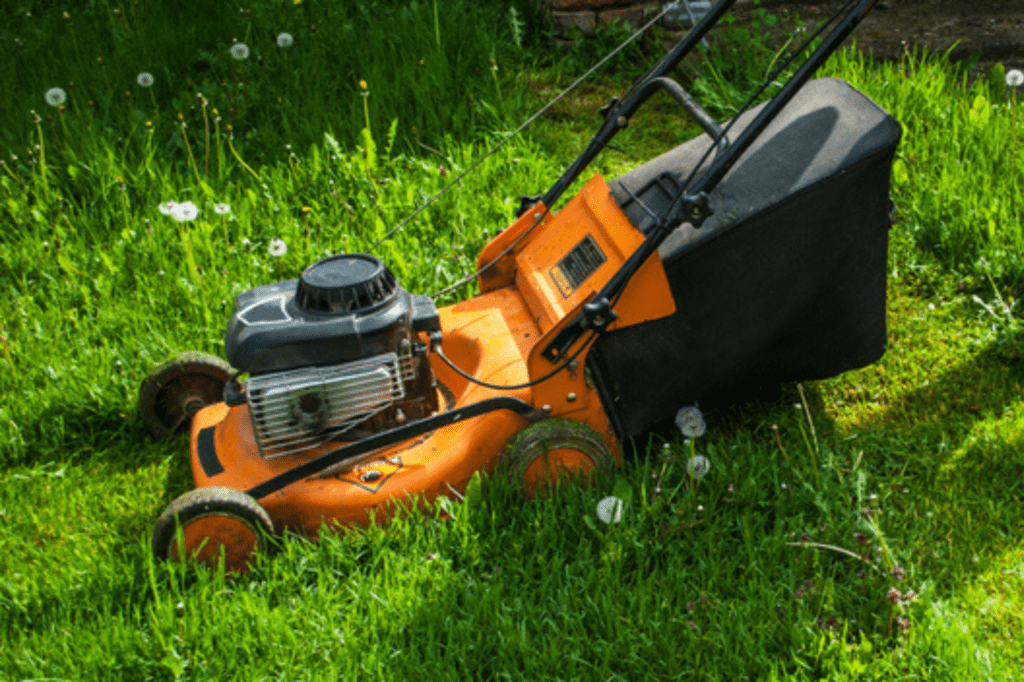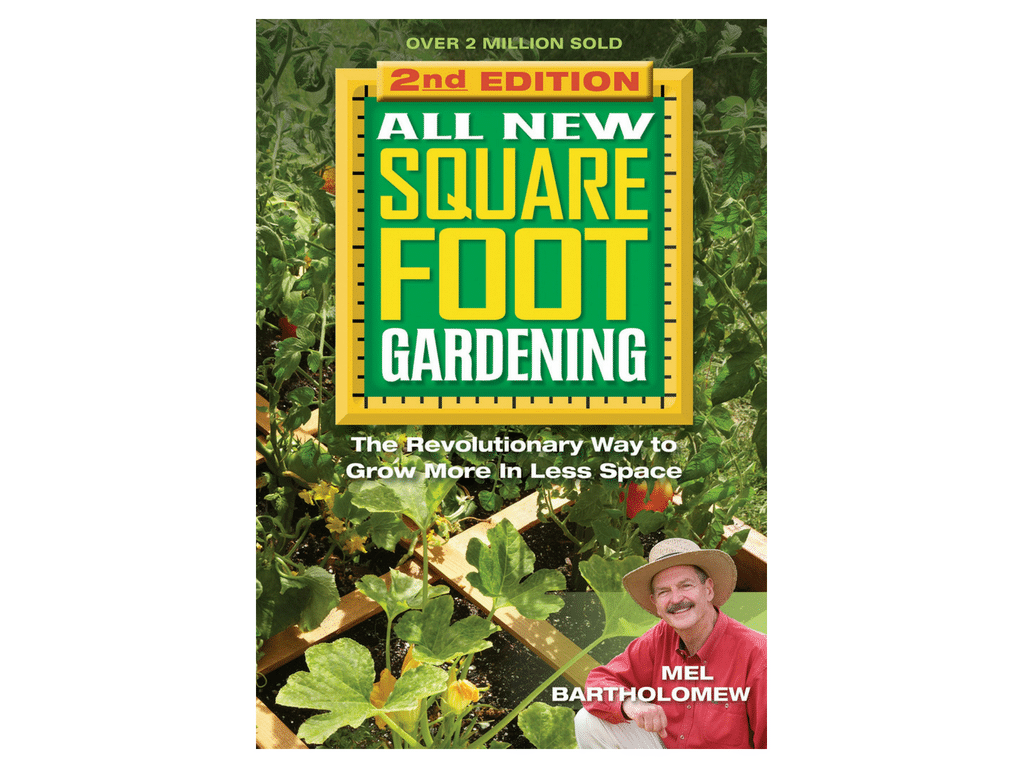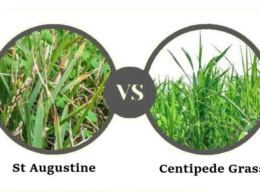Are you facing the challenge of mowing a steep hillside? Don’t worry, we’ve got you covered! Mowing on uneven terrain can be daunting, but with the right techniques and precautions, you can conquer it safely.
In this article, we will guide you through the process of safely mowing a steep hillside, ensuring your well-being and the longevity of your equipment.
Before you begin, it’s crucial to assess the terrain and identify any potential hazards. Choosing the right equipment is equally important, as it will provide stability and control. Preparing the hillside beforehand and starting from the bottom, working your way up, will help maintain your balance and prevent accidents. Using proper mowing techniques and taking regular breaks to stay hydrated are essential for your safety.
Be mindful of safety precautions throughout the process, and don’t forget to maintain your equipment for optimal performance and longevity. By following these guidelines, you can confidently tackle the challenge of mowing a steep hillside while prioritizing your safety.
Let’s get started!
Quick Summary
- Assess the terrain and identify potential hazards before starting to mow.
- Choose the right equipment, including safety gear, a well-maintained mower, a self-propelled mower, and a roll bar or ROPS.
- Prepare the hillside to prevent erosion by addressing signs of erosion and mowing across the slope.
- Always prioritize safety and be mindful of safety precautions throughout the mowing process.
Assess the Terrain and Potential Hazards
Before you start mowing, take a moment to assess the terrain and any potential hazards that could make your task on the steep hillside more challenging. Safety should be your top priority when mowing on a slope. Evaluating risks and understanding the slope is crucial to ensuring a safe mowing experience.
Begin by carefully observing the hillside. Look for any obstacles such as rocks, roots, or uneven ground that could cause you to lose control of the mower. Clear away any debris that could pose a tripping hazard or damage the mower.
Next, consider the angle of the slope. Steeper slopes can be more difficult to navigate and may increase the risk of accidents. It’s important to know your equipment’s limitations and the maximum angle it can safely handle. If the slope is too steep, it may be best to seek professional help or consider alternative methods of maintaining the area.
Additionally, be mindful of any potential water runoff or erosion issues. Heavy rain or irrigation can create slippery conditions, making mowing hazardous. Avoid mowing immediately after rain and wait for the ground to dry out.
By carefully evaluating risks and understanding the slope, you can ensure a safer mowing experience on a steep hillside. Remember to always prioritize your safety and take necessary precautions to minimize any potential hazards.
Choose the Right Equipment
When tackling a slope, you’ll want to make sure you have the appropriate tools at your disposal. This not only ensures your safety but also makes the task easier and more efficient.
Here are four essential items you should consider when choosing the right equipment for mowing a steep hillside:
- Safety gear: Prioritize your safety by wearing appropriate gear such as sturdy boots with good traction, gloves to protect your hands, and safety glasses to shield your eyes from debris.
- Equipment maintenance: Regularly maintain your mower to ensure it’s in good working condition. Check the blades for sharpness, oil levels, and tire pressure. A well-maintained mower will provide better control and reduce the risk of accidents.
- Self-propelled mower: Opt for a self-propelled mower when mowing steep hills. This type of mower provides better stability and control, reducing the risk of the mower sliding or tipping over.
- Roll bar or ROPS: If your mower is equipped with a roll bar or ROPS (rollover protection system), make sure it’s properly installed and functional. These safety features provide added protection in case of a rollover incident.
Remember, safety should always be your top priority when mowing a steep hillside. By using the right equipment and maintaining it properly, you can minimize risks and enjoy a safe mowing experience.
Prepare the Hillside Before Mowing
Make sure you’ve taken the necessary steps to ensure a smooth and successful mowing experience on the incline. When dealing with a steep hillside, it’s crucial to prepare the area properly to prevent any potential accidents or damage.
One of the main concerns when mowing on a hillside is hillside erosion, which can lead to soil erosion and the loss of valuable topsoil. To avoid this, start by inspecting the hillside for any signs of erosion, such as exposed roots or bare patches. If you notice any areas of concern, take the time to address them before mowing. This could involve planting grass or ground cover, installing erosion control measures like retaining walls or terracing, or even consulting with a professional for advice.
Additionally, make sure to mow the hillside in a way that prevents soil erosion. Always mow across the slope rather than up and down, as mowing vertically can lead to soil displacement.
By following these steps, you can help prevent hillside erosion and ensure a safe mowing experience.
Start from the Bottom and Work Your Way Up
To ensure a smooth and successful mowing experience on the incline, begin at the bottom and work your way up, carefully navigating the slope. This technique will help you maintain control and prevent any mishaps while mowing a steep hillside.
Here are some mowing techniques and safety precautions to keep in mind:
- Maintain a slow and steady pace: When mowing on a steep hillside, it’s important to go at a slower speed than usual. This will allow you to have better control over the mower and react quickly to any changes in terrain.
- Use a push mower: Using a push mower instead of a riding mower is recommended for mowing steep hills. Push mowers are lighter and more maneuverable, making them safer to use on inclines.
- Trim the edges first: Before starting to mow the main area, trim the edges of the hillside. This will create a clear boundary and give you more room to maneuver while mowing.
Remember to always wear appropriate safety gear, such as sturdy shoes with good traction and safety glasses. Additionally, make sure the hillside is dry and free of any debris before mowing.
By following these mowing techniques and safety precautions, you can safely and effectively maintain your steep hillside.
Use Proper Mowing Techniques
You’ll achieve the best results by utilizing proper mowing techniques on your incline, ensuring a well-manicured and healthy lawn. When it comes to mowing a steep hillside, it’s crucial to pay attention to the height of the grass and the direction in which you mow.
First and foremost, make sure you adjust your mower’s cutting height. Keep the grass on the taller side, around 3 to 4 inches, as this will promote deeper root growth and help prevent erosion on the hillside. A longer grass height also provides better coverage, preventing weed growth and allowing the grass to withstand foot traffic better.
Next, consider the direction in which you mow. It’s recommended to mow across the slope rather than up and down. This horizontal mowing pattern prevents the mower from slipping or tipping over and reduces the risk of accidents. Additionally, mowing across the slope helps prevent soil erosion by minimizing the amount of soil disturbed during the mowing process.
Remember, safety should always be your top priority when mowing a steep hillside. By following these proper mowing techniques, you can maintain a well-kept lawn while reducing the risk of injury or damage to yourself and your property. Stay safe and enjoy the satisfaction of a beautifully maintained hillside lawn.
Take Breaks and Stay Hydrated
Remember, it’s important to prioritize your well-being while working on your incline, so make sure to take regular breaks and stay hydrated. Mowing a steep hillside can be physically demanding, so give yourself time to rest and recover.
Here are some tips to help you take breaks and prevent accidents:
- Plan your breaks strategically: Identify safe spots on the hillside where you can stop and rest. These spots should be level and free from any obstacles that could cause you to lose your balance. Take breaks at regular intervals to avoid overexertion.
- Stay hydrated: Dehydration can lead to fatigue and impaired judgment, increasing the risk of accidents. Drink plenty of water before, during, and after mowing. Consider keeping a water bottle nearby to ensure easy access to hydration.
- Use caution when restarting: After taking a break, it’s crucial to resume mowing safely. Before restarting your mower, check the slope for any loose debris or rocks that could pose a hazard. Take a moment to assess your surroundings and ensure you have a firm footing before proceeding.
By taking breaks and staying hydrated, you’ll not only protect your well-being but also reduce the likelihood of accidents. Remember, your safety should always be the top priority when working on a steep hillside.
Be Mindful of Safety Precautions
Stay aware of the safety precautions necessary when working on a hill, ensuring your well-being and reducing the risk of accidents. Mowing a steep hillside can present unique challenges, but by being mindful and following proper safety measures, you can safely tackle the task.
First and foremost, make sure you wear appropriate clothing and footwear. Opt for sturdy shoes with good traction to prevent slipping. It’s also important to use safety goggles and ear protection to shield yourself from any debris or excessive noise.
Before you start mowing, take the time to survey the area. Look out for any obstacles such as rocks, tree stumps, or uneven terrain. Remove any debris or objects that could pose a hazard to both you and your mower.
When mowing on a hill, always go across the slope and avoid mowing up and down. This will help maintain stability and prevent the mower from tipping over. Take it slow and steady, being mindful of your footing and the mower’s balance.
Lastly, never mow when the grass is wet or slippery. Wet grass can make the hillside even more treacherous. Wait for the ground to dry before attempting to mow.
By staying mindful and following these safety precautions, you can confidently mow your steep hillside, ensuring a well-maintained lawn while keeping yourself safe from potential accidents.
Maintain Your Equipment for Longevity and Safety
Now that you’re mindful of the safety precautions, let’s talk about the importance of maintaining your equipment for both longevity and safety when mowing a steep hillside.
Keeping your equipment in good working condition is crucial to ensure a smooth and safe mowing experience. Regular maintenance of your lawn mower is essential to prevent any unexpected breakdowns or accidents.
Start by checking the blades for sharpness and balance. Dull or unbalanced blades can cause the mower to vibrate excessively, making it difficult to control on a steep hillside. Additionally, inspect the tires for proper inflation and tread wear. Uneven or low tire pressure can affect the mower’s stability and traction, increasing the risk of tipping over.
Furthermore, don’t forget to clean the undercarriage of your mower after each use. Grass clippings and debris can build up and obstruct the blades, diminishing their cutting efficiency and potentially causing the mower to stall or overheat.
Lastly, always follow the manufacturer’s recommended maintenance schedule. This includes changing the oil, air filter, and spark plug regularly. Properly maintained equipment not only ensures your safety but also extends the life of your mower.
Remember, maintaining your equipment is just as important as following safety measures when mowing a steep hillside. By taking proper care of your lawn mower, you can enjoy a safer and more efficient mowing experience.
Frequently Asked Questions
What type of grass is best suited for steep hillside mowing?
For a safe and well-maintained grass on a steep hillside, choose grass types like fine fescue, tall fescue, or zoysia. Ensure proper soil preparation, regular watering, and mow when the grass is dry and not too tall.
How often should I mow a steep hillside?
To safely maintain a steep hillside, mow it regularly but avoid overdoing it. Aim to mow your grass when it reaches around 3 inches in height. Also, remember to water and fertilize appropriately for healthy growth.
Can I use a regular lawnmower on a steep hillside?
Using a regular lawnmower on a steep hillside may not be safe. There is a risk of tipping over or losing control. Consider alternative mowing methods to ensure your safety.
Are there any specific safety gear or equipment I should wear while mowing a steep hillside?
To safely mow a steep hillside, it is crucial to take safety precautions and wear necessary equipment. This includes wearing sturdy boots, eye protection, gloves, and using a mower with good traction and a safety harness.
What are some signs of equipment damage or malfunction that I should watch out for when mowing a steep hillside?
Watch out for signs of equipment damage or malfunction while mowing a steep hillside. Regular equipment maintenance is crucial. Avoid common mowing mistakes, such as hitting rocks or stumps, which can damage the mower and pose safety risks.
Conclusion
In conclusion, mowing a steep hillside can be a challenging task, but by following these safety guidelines, you can do it safely and effectively.
Assess the terrain, choose the right equipment, and prepare the hillside before mowing. Remember to start from the bottom and work your way up, using proper mowing techniques.
Take breaks, stay hydrated, and be mindful of safety precautions. Lastly, maintain your equipment regularly for both longevity and safety.
Happy mowing!











